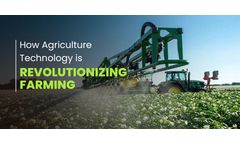Crop Engineering Articles & Analysis: Older
9 articles found
The agricultural sector is at a critical stage. With the global population projected to reach nearly 10 billion by 2050, the demand for food is increasing rampantly. At the same time, there is mounting pressure to adopt sustainable farming practices to protect our planet’s limited resources. This delicate balance between increasing food production and minimizing environmental impact ...
This has the potential to be used for highly targeted pest control. Imagine a crop engineered to produce an RNAi that specifically kills a certain destructive insect species, while leaving beneficial insects, bees, and other non-target species unharmed. ...
It is an ideal supporting pipe for compressors, engine parts, machinery maintenance, crop spraying and civil engineering equipment. ...
However, the farmer’s business mission is to optimize the yield and quality of their crops, which can be accomplished by optimizing water usage. For crop irrigation, optimal water efficiency means minimizing losses due to evaporation or runoff. With crop engineering, soil management and new technology and information, the ...
Sun Gro fulfills the demand for specific crop blends engineered to satisfy the needs of particular crops and growing styles. ...
Deal wants to know more because he figures if he can pinpoint the genetic material that controls this capacity, he might be able to find a way to switch it on in similar plants where it might be present but dormant. This would allow crops such as alfalfa to get by with less water. Deal is not the only one with an eye to applying genetic engineering to helping ...
ByEnsia
But fact of the matter is, with conversion rates hovering around 2 percent for our best crop fields, they’re by no means great. Even a slight increase in the efficiency with which they turn solar energy to biomass could dramatically boost crop productivity and so reduce the need to clear more land as demand for food skyrockets and the yield gains garnered ...
ByEnsia
A substantial and growing body of literature now exists on the socio–economic impacts of genetically engineered (GE) crops. While the bulk of literature has focused on the primary impacts of commercialised GE technology, in terms of changes in yields, costs and profitability, researchers have increasingly addressed a range of additional questions such as the ...
A vast literature has accumulated since crop varieties with transgenic resistance to insects and herbicide tolerance were released to farmers in 1996 and 1997. ...







